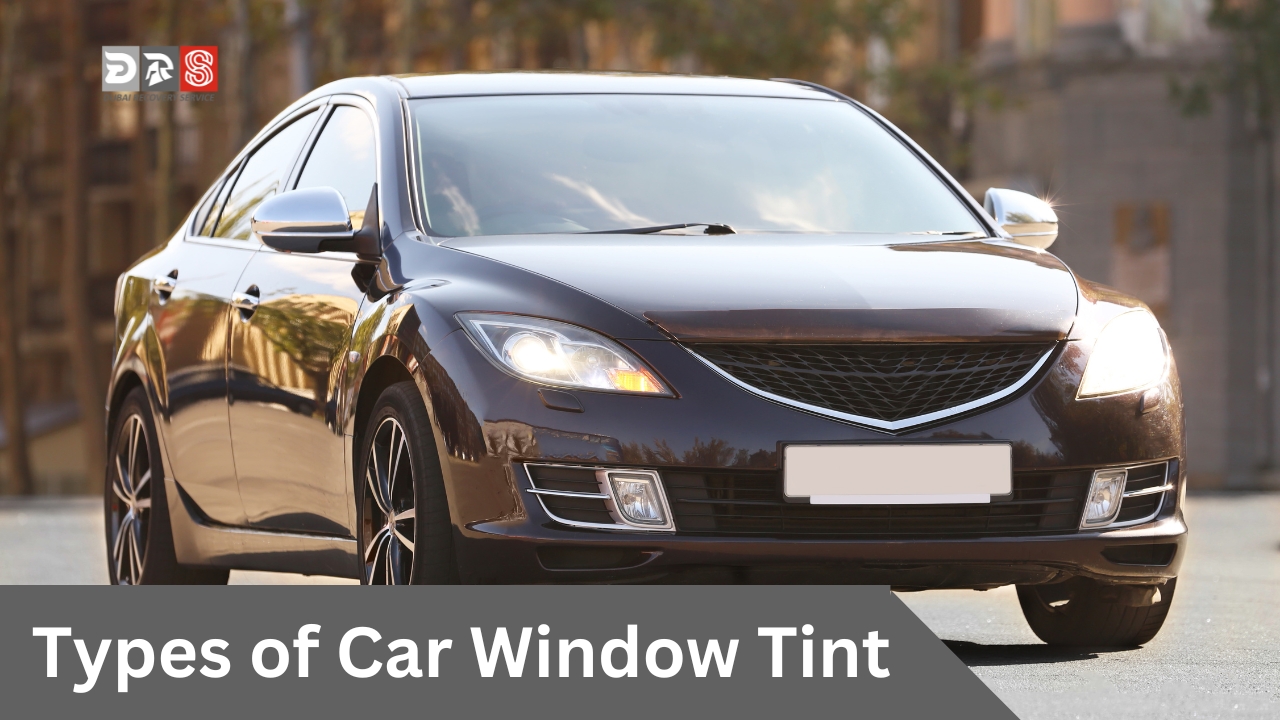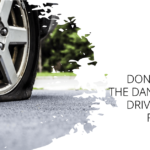The growing popularity of car window tinting can be attributed to its ability to improve driving conditions by reducing glare and heat from the sun while also enhancing privacy and security of the vehicle. However, with numerous car window tint options available at varying price points, navigating the selection process can prove to be a challenging endeavor.
To facilitate this decision-making process, we present a comprehensive overview of the different types of car window tint, offering valuable insights to guide you effectively. Enjoy the informative review as you approach your final choice with confidence.
5 Types of Car Window Tinting
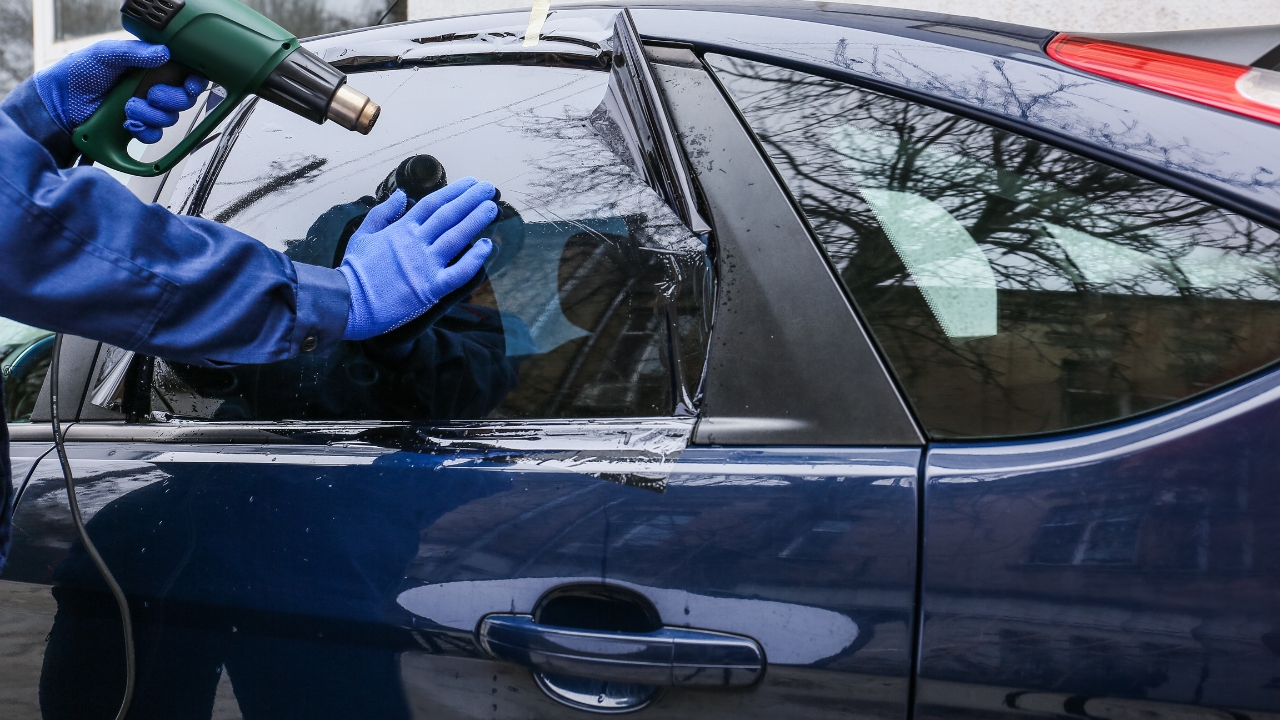
Let’s discuss the various automobile window tints available and their respective benefits.
1. Dyed Window Tinting
Dye window tinting is often used to personalize a vehicle’s appearance and keep the inside secure. It consists of multiple layers of dyed film that absorb sunlight when it attempts to enter through the windows. You have the flexibility to adjust the darkness level according to your preference. Dyed tint is widely available and cost-effective, making it the most common choice for window tinting.
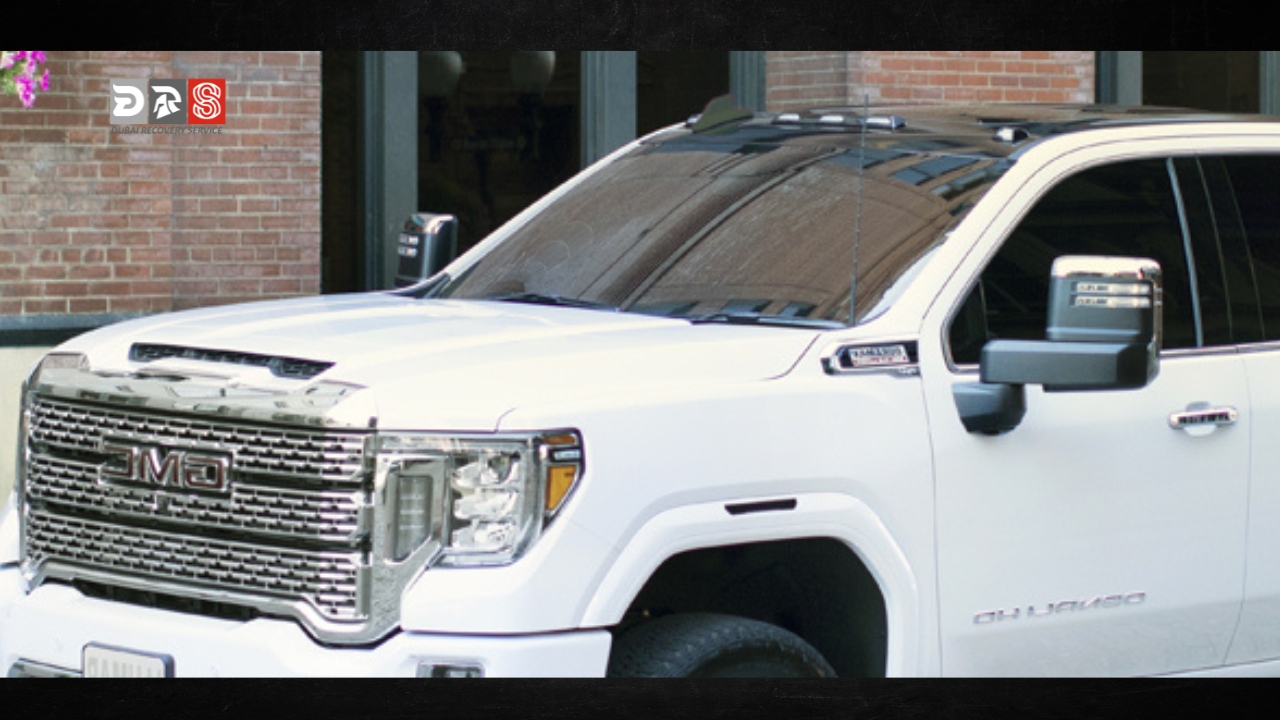
However, it is important to note that dyed tints do not provide the same level of UV protection as other products. Additionally, their ability to block heat from the sun is limited. Over time, they may also fade, which further diminishes their effectiveness.
2. Metallized Window Tinting
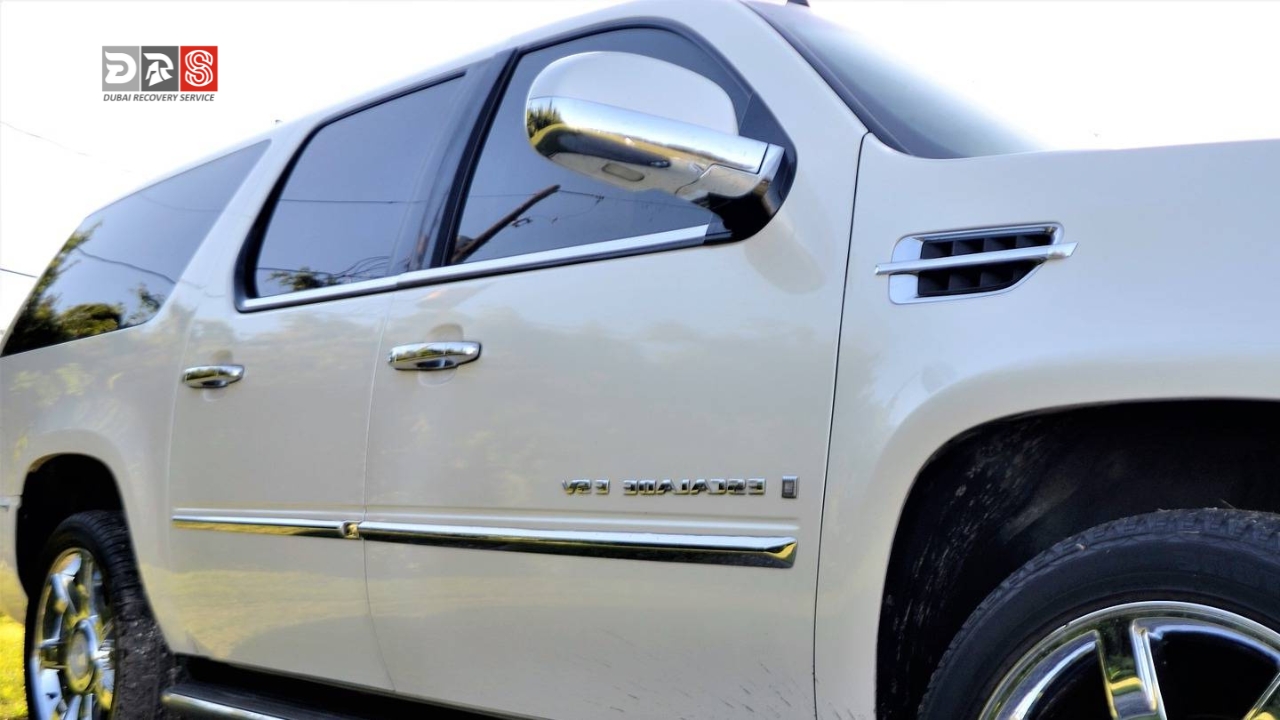
Metalized tints contain tiny particles of metal. Instead of absorbing sunlight, they rely on reflection to keep it out. Compared to dyed tinting, metalized tints are significantly more effective at this task.
- Metalized window tints’ ability to moderate interior temperatures is a major advantage. Reflective metal micro particles in the coating keep the car’s interior cooler and shields you from harmful UV radiation.
- The metallic particles in the film block off distracting glare and reflections, making for a more pleasant and secure driving experience.
- Tinting your windows with a metallic film is a great way to increase privacy and safety. They help hide personal concerns from public view by blocking passengers’ views inside the vehicle.
- There are a lot of positives to having metallic window tinting, but there are also some drawbacks. The potential downside is that the coating’s metal particles may interfere with technical devices like GPS and cell phone signals.
If you’re looking for a long-lasting solution that delivers exceptional heat resistance, UV protection, glare reduction, privacy enhancement, and heightened security for your car’s windows, metallic window tinting may be the perfect option.
3. Carbon Window Tinting
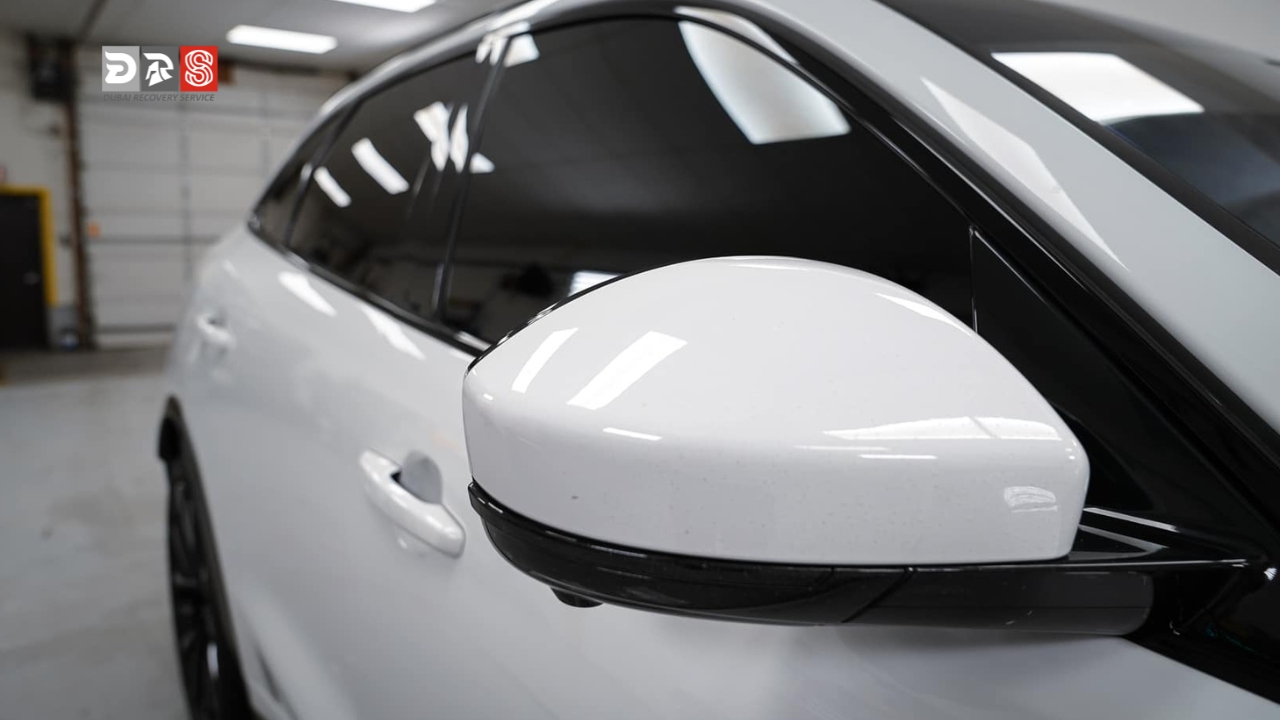
Carbon window tints consist of carbon fiber particles that maintain their color and do not fade with time. Compared to dyed or metallic tints, they are highly efficient in blocking the sun’s rays. Many individuals favor ceramic tinting due to its matte finish, which adds to its aesthetic appeal.
- In addition to its visual advantages, carbon tinting offers exceptional insulation properties. It significantly diminishes the heat from the sun, reducing the internal temperature of the vehicle by approximately 40 percent.
- However, one drawback of carbon tinting is its higher cost compared to other options. Nevertheless, its exceptional durability and long lifespan can compensate for the additional expense.
Also Read: Is It Safe To Drive With A Cracked Windshield?
4. Ceramic Window Tinting

Ceramic tint is the top performer when it comes to window tinting, outshining carbon fiber tint in terms of performance. It has the remarkable ability to block over 99 percent of harmful UV rays. Unlike other tints, ceramic tint does not contain any dyes or metal particles, ensuring that it won’t fade over time or disrupt radio signals.
- What sets ceramic tint apart is its heat resistance. The ceramic particles it contains are non-conductive, providing excellent sunlight reflection and superior insulation. Consequently, it is the most effective tint for reducing the amount of heat from the sun that enters your car, decreasing its impact on the internal temperature by approximately 50 percent.
- Similar to metallic tints, ceramic tint enhances the strength of windows, making them more resistant to shattering. Additionally, it has the added advantage of reducing glare without requiring an overly dark tint. This means you can opt for a lighter shade for your vehicle without compromising on glare reduction.
- As expected, ceramic tint comes with a higher price tag compared to other options. It represents the gold standard in window tinting, and therefore, you can expect to pay a premium for its exceptional qualities.
5. Crystalline Window Tinting
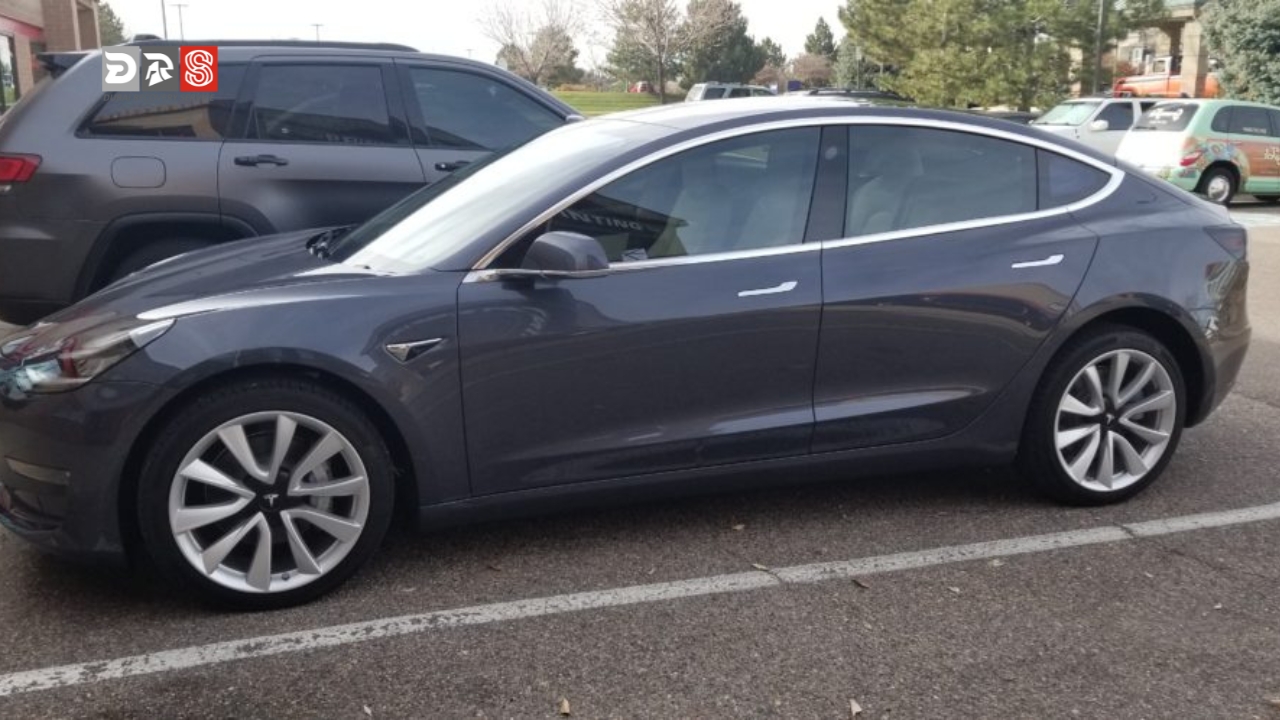
Crystalline window tinting is a cutting-edge solution for enhancing your vehicle’s windows. This advanced technology uses multilayer optical film to provide superior heat and UV protection while maintaining exceptional clarity and visibility.
- The benefits of crystalline tinting include blocking up to 99 percent of harmful UV rays, reducing heat buildup inside the car, and preventing fading of interior upholstery.
- Moreover, it allows for optimum visibility both during the day and at night, making it a practical choice for drivers.
- However, the main drawback of crystalline tinting is its higher cost compared to other tinting options, which can be a consideration for budget-conscious individuals.
Reasons to Tint Your Car Windows
Tinting your car’s windows has several advantages, including a more aesthetically pleasing vehicle, a more comfortable interior, less glare, more privacy and security, better safety, and lower energy costs.
Heat Reduction
Tinted automobile windows help keep the inside cooler in the summer and cooler in the winter. Tinted windows may reduce the heat entering a vehicle by as much as 60%, making the ride much more bearable in the summer.
UV Ray Protection
The sun’s harmful UV rays may be blocked by tinted windows. These rays may harm your skin and eventually fade and ruin your car’s interior. Cars with tinted windows are protected from the sun’s damaging rays, and their interiors last longer.
Glare Reduction
Tinted windows greatly minimize glare, making them more comfortable on sunny days. Relieving eye fatigue caused by glare may enhance vision and make driving safer.
Privacy and Security
With the windows tinted, you and your things inside the vehicle will have more anonymity and safety. They offer a layer of seclusion and protect the car from would-be intruders by obstructing outsiders’ views.
Upholstery Protection
Sunlight may fade and harm your car’s upholstery and other interior surfaces if exposed daily. Blocking the sun’s ultraviolet rays using window tint helps to preserve the life of your car’s upholstery.
In The Last
Now that you’ve familiarized yourself with the different types of car window tint, you can make a more informed decision about the best one for your vehicle. The great news is that there’s a tinting product available to suit nearly any budget.
Choosing a reliable window tint specialist is crucial. Apart from providing valuable insights into the advantages of various tinting products, a skilled technician ensures the installation is carried out accurately. You can also trust a professional to be aware of the legal window tint percentage in UAE or your specific location.
At Dubai Recovery Service, we take pride in being a leading window tinting company serving in UAE. As an trusted dealer, we adhere to the highest standards in terms of products, installation, and customer satisfaction. With our wide range of options, you can drive away with the perfect tint that matches your preferences and lifestyle.
FAQ
Which type of window tint is best?
You may prioritize heat reduction, privacy, or UV protection when selecting window tint.
Can I install the car window tinting myself, or should I hire a professional?
To ensure a job is professionally done without complications, tinting your car’s windows should be left to a professional.
How much does car window tinting cost in UAE?
Auto window tinting in the UAE may cost AED 300 to AED 1,500, depending on the vehicle’s make and model, the film used, and the business’s location.
What is the best car tint for privacy?
A darker tint with a lower Visible Light Transmission percentage may increase your vehicle’s privacy.

